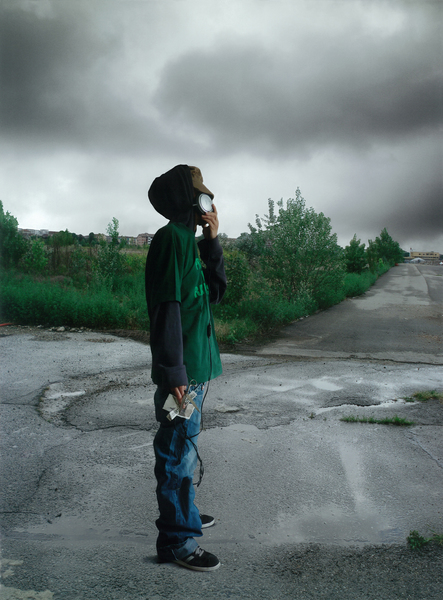
La rivolta I , 2012 |
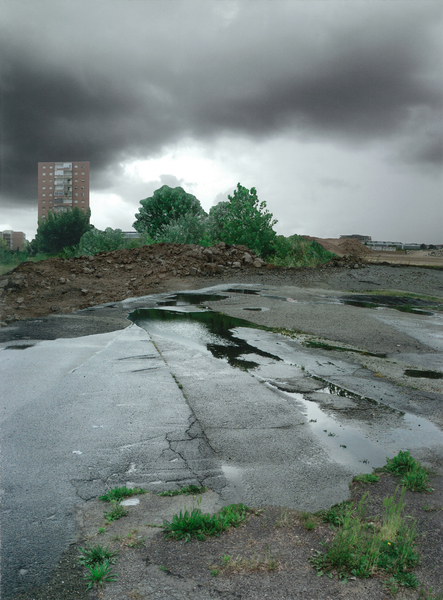
La rivolta II, 2012 |

Amusement park I, 2012 |
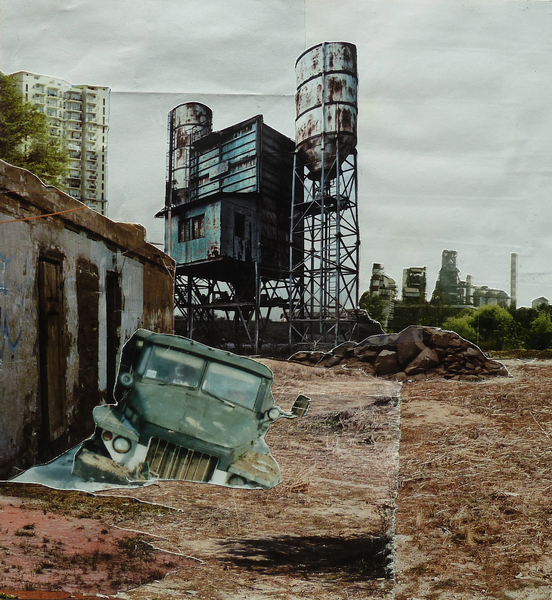
Amusement park II, 2012 |

Amusement park III, 2012 |
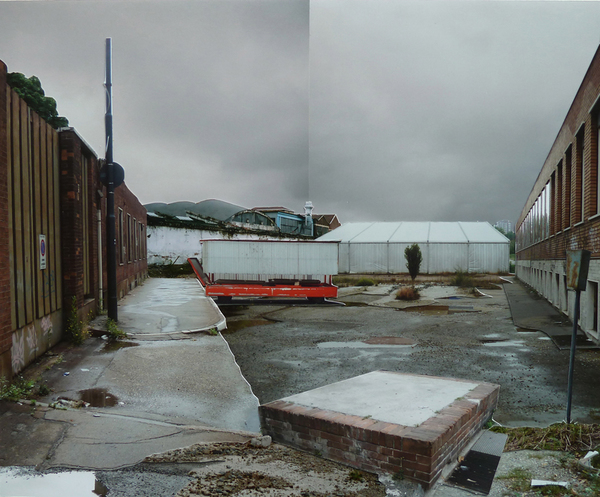
Le sagome arruginite, 2012 |
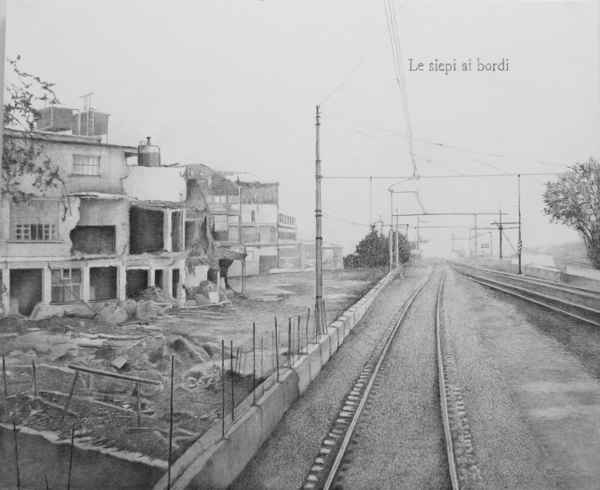
Le siepi, 2011 |
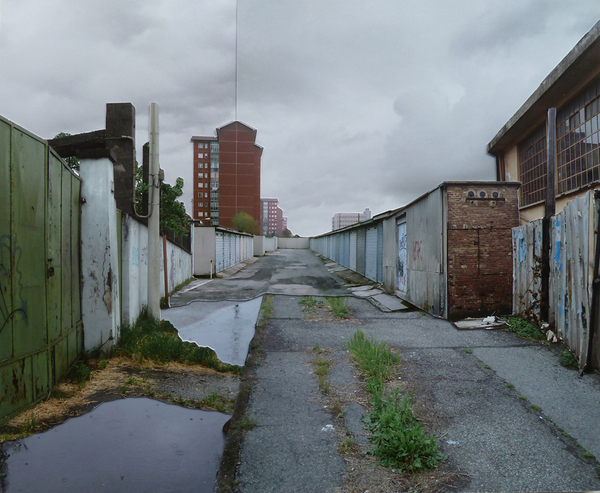
Nei sobborghi, 2012 |
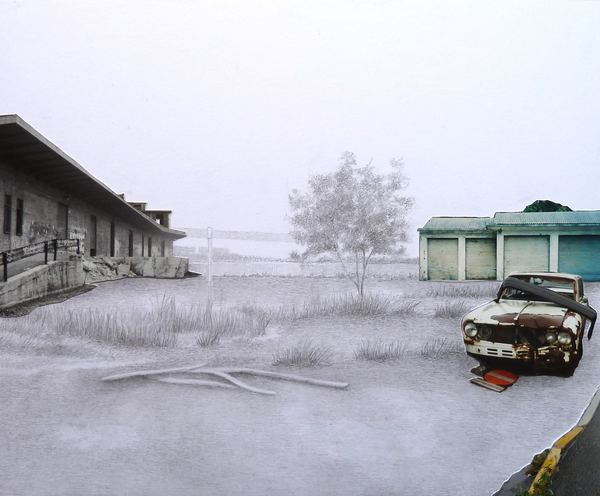
Le automobili erano accostate ai marciapiedi, 2012 |
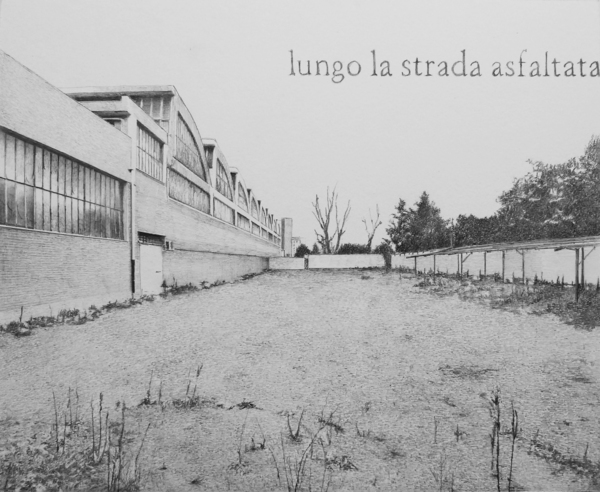
Lungo la strada asfaltata, 2011 |
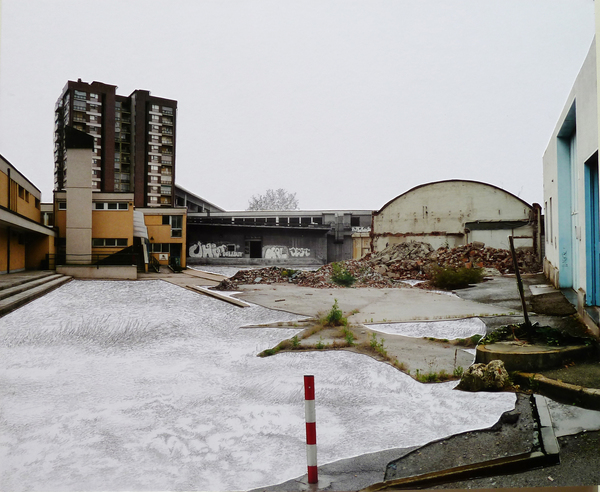
I palazzi crollati, 2012 |
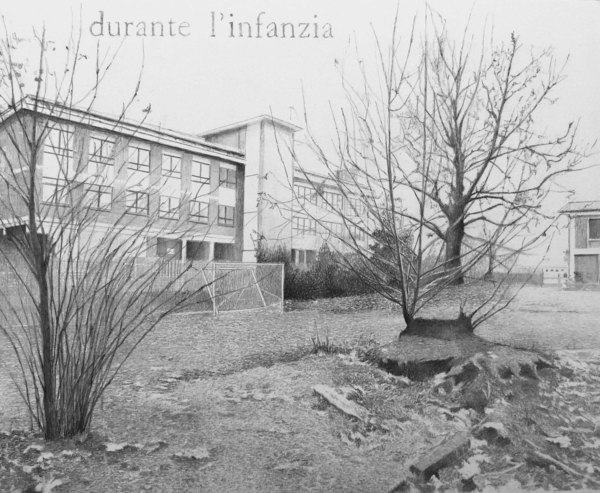
Durante l'infanzia, 2012 |
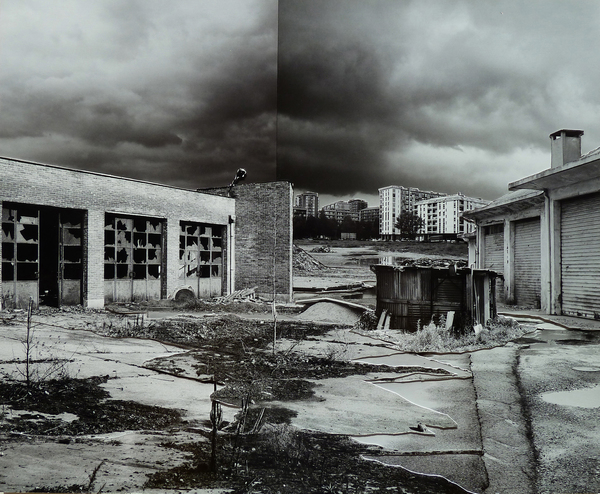
Un quartiere, 2012 |
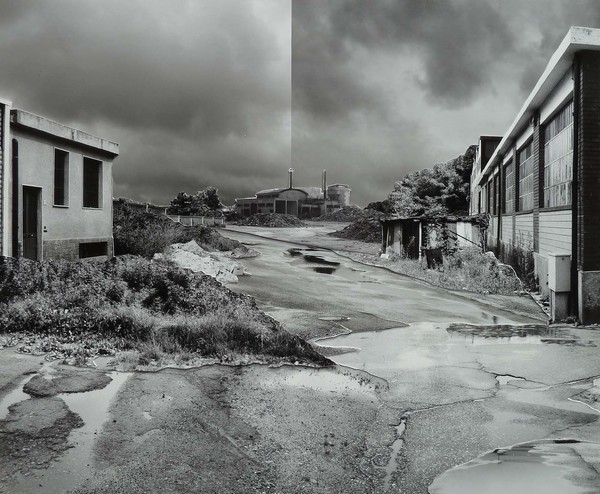
Gli edifici più bassi, 2012 |
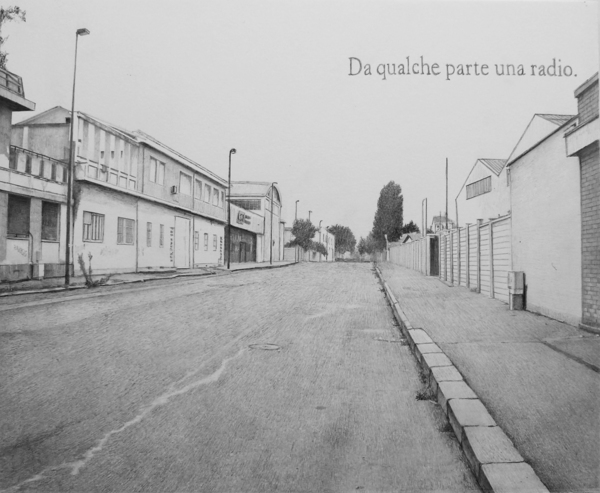
Da qualche parte una radio, 2011 |
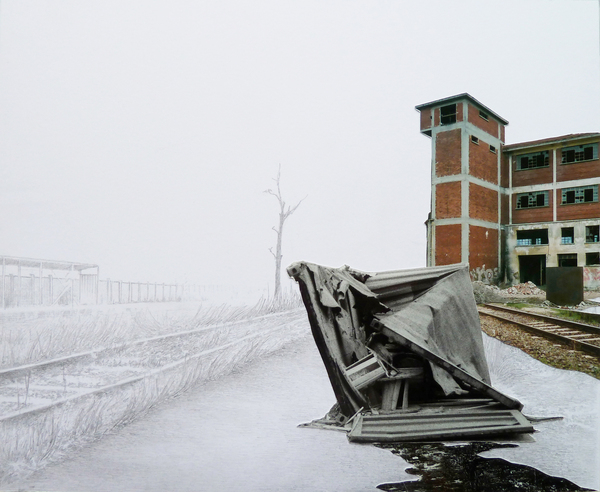
Sbarramenti di metallo, 2012 |
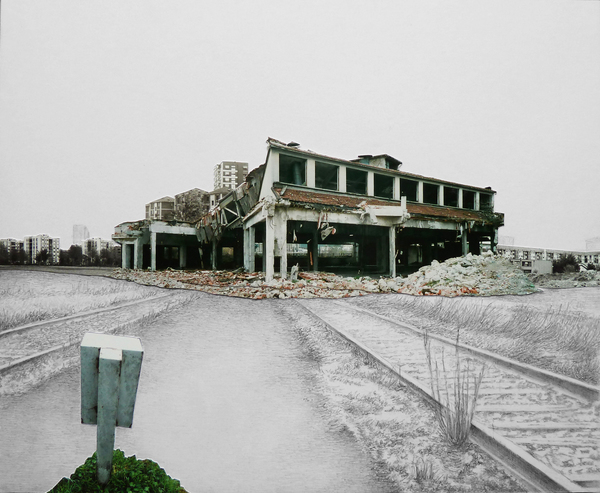
Capannoni industriali, 2012 |
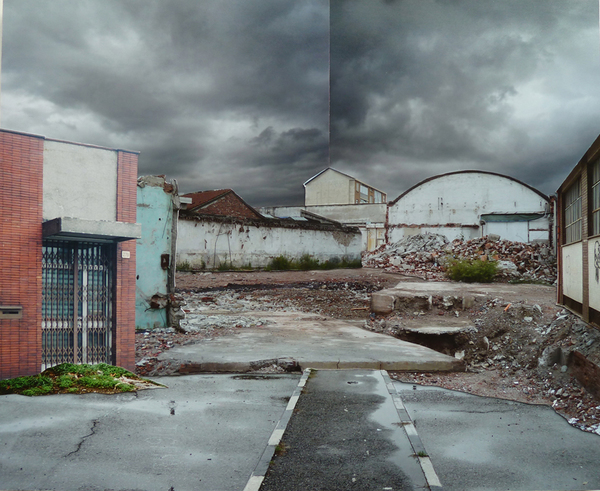
Ai bordi, 2012 |
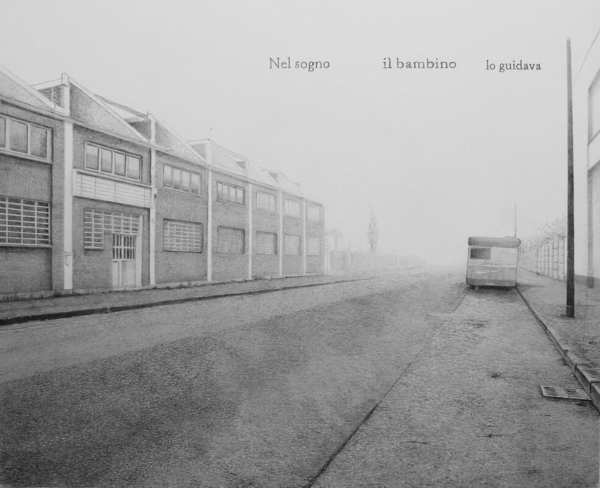
Nel sogno, 2011 |
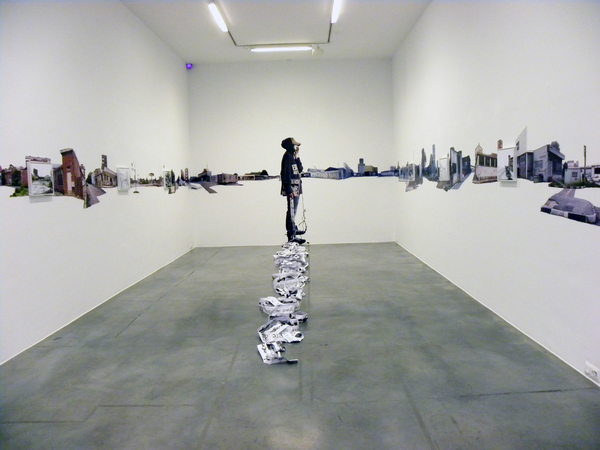
Camminando, 2012 |
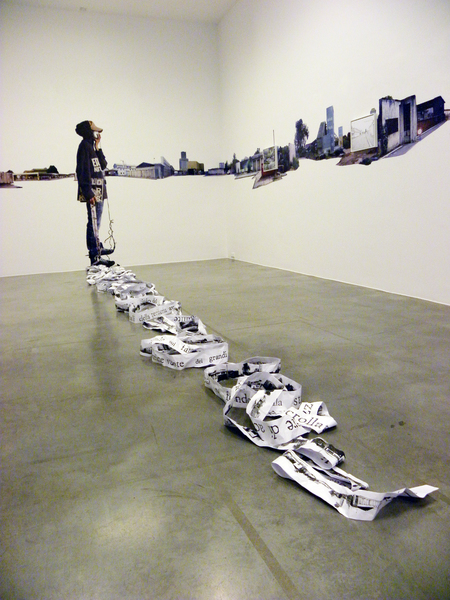
Un Cerchio, 2012. |
The project that we have carried out in the Oliva Arauna Gallery is called “Camminando sul fango”.
The exhibition is a reflection on the conditions of all the most marginalised areas, on the violence embodied by the landscape and on the resistance of the people that, in spite of everything, carry on trying to live a dignified life. But we do not have enough time to try to repair all the damage that has been done: we are walking on a ground that has turned to mud.
The exhibition develops horizontally via a line of words traversing the gallery space. The text is a “cut-up” of phrases taken from an Italian translation of the J. G. Ballad novel, “The Drowned World”. The text gradually becomes a landscape that moves from black and white to colour, following a rhythm, like a musical movement.
The technique is as follows: paper is attached directly to the wall, on which are placed drawings, collage and black and white and colour photomontages on forex, creating pauses and periods, and remarking the fragmentary nature of the places.
In the centre of the back wall, as if interrupting the flow of words and places, is placed a figure in profile; unwinding a roll of paper which reproduces texts and landscapes in black and white.
This line culminates in a paper sculpture in the gallery space.
This installation asks the viewers to allow themselves to be carried along by their reading of these wounded landscapes, deprived of a strong identity but not of poetry. These are places of memory but also of life as is testified by the figure asserting that he belongs to these places.
In the middle room we encounter three small collages “Amusement park I, II, II”, which we made by cutting out photographs from newspapers and magazines, reconstructing a new reality.
Underneath the collages the line of text draws the perimeter of the room.
In the first room are displayed two large works entitled “La Rivolta I and II¨ which are composed of photomontages on PVC. These images mark the beginning of the exhibition.
In one of these two works the figure, also in profile, seems to relate to the surrounding landscape. He appears to be in harmony with these forgotten places, but at the same time in a state of unrest, conscious that this briefly new, wild post-natural landscape will soon be destroyed by land speculation. As his only system of defence the figure wears a green t-shirt and a hooded jacket to blend into his surroundings. His headphones transform into a gasmask and he also carries scissors to cut and preserve the words and phrases that enable him and others to remember the need for a revolution in the state of affairs.

